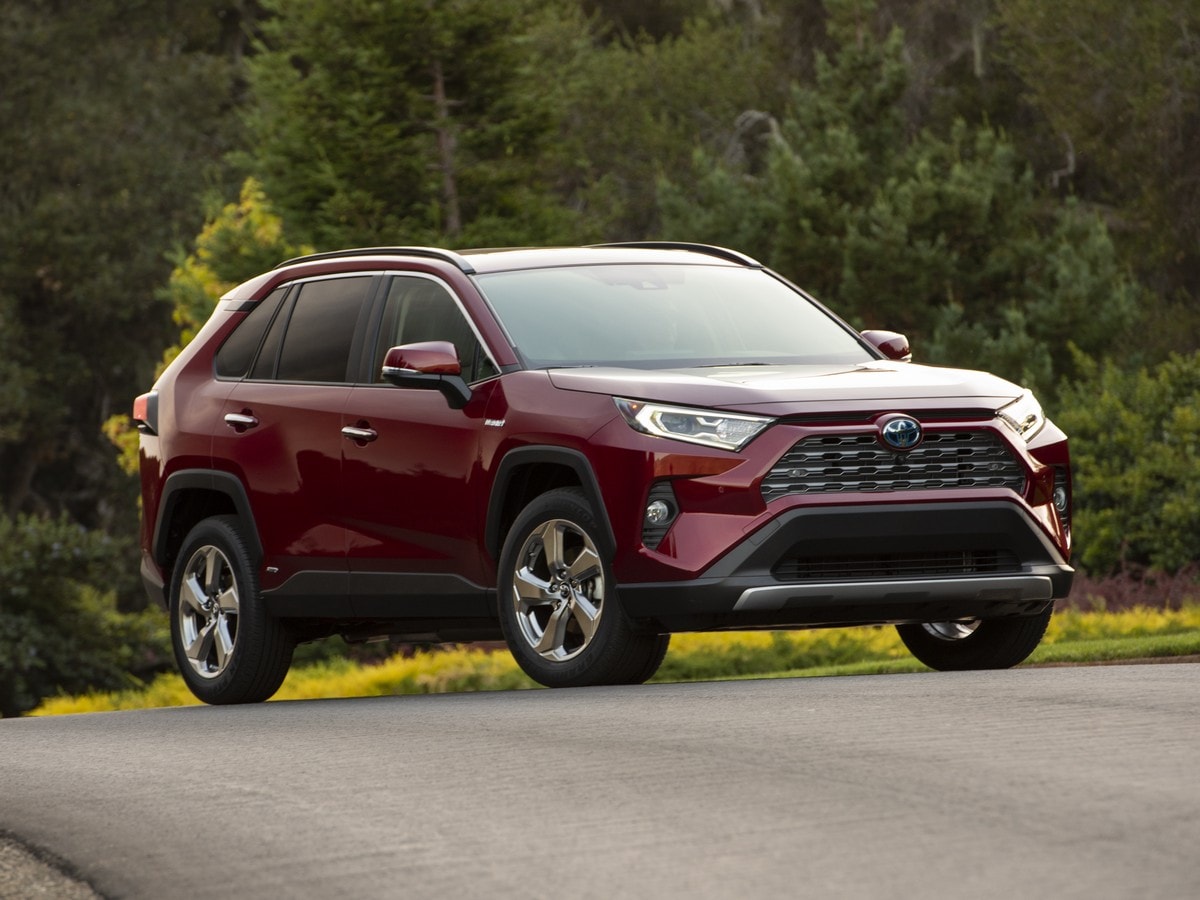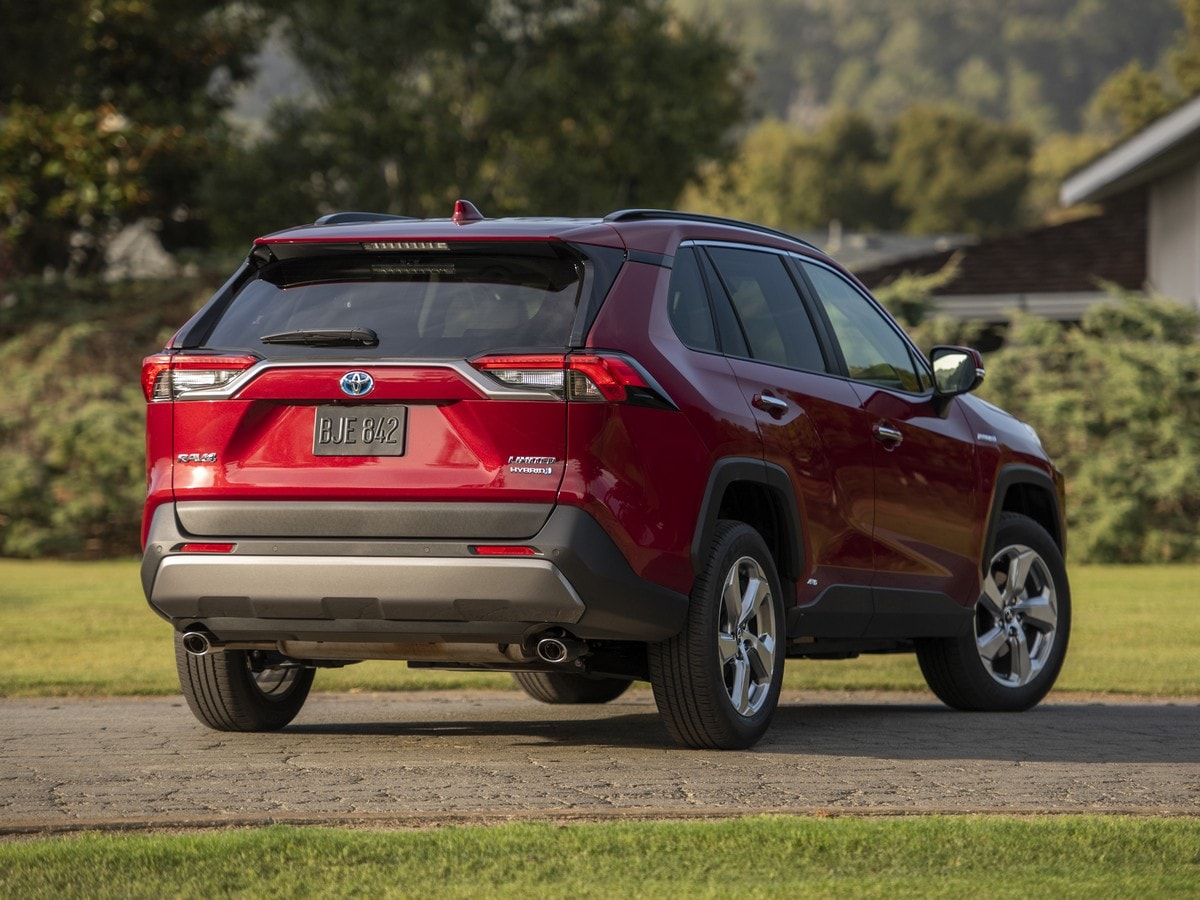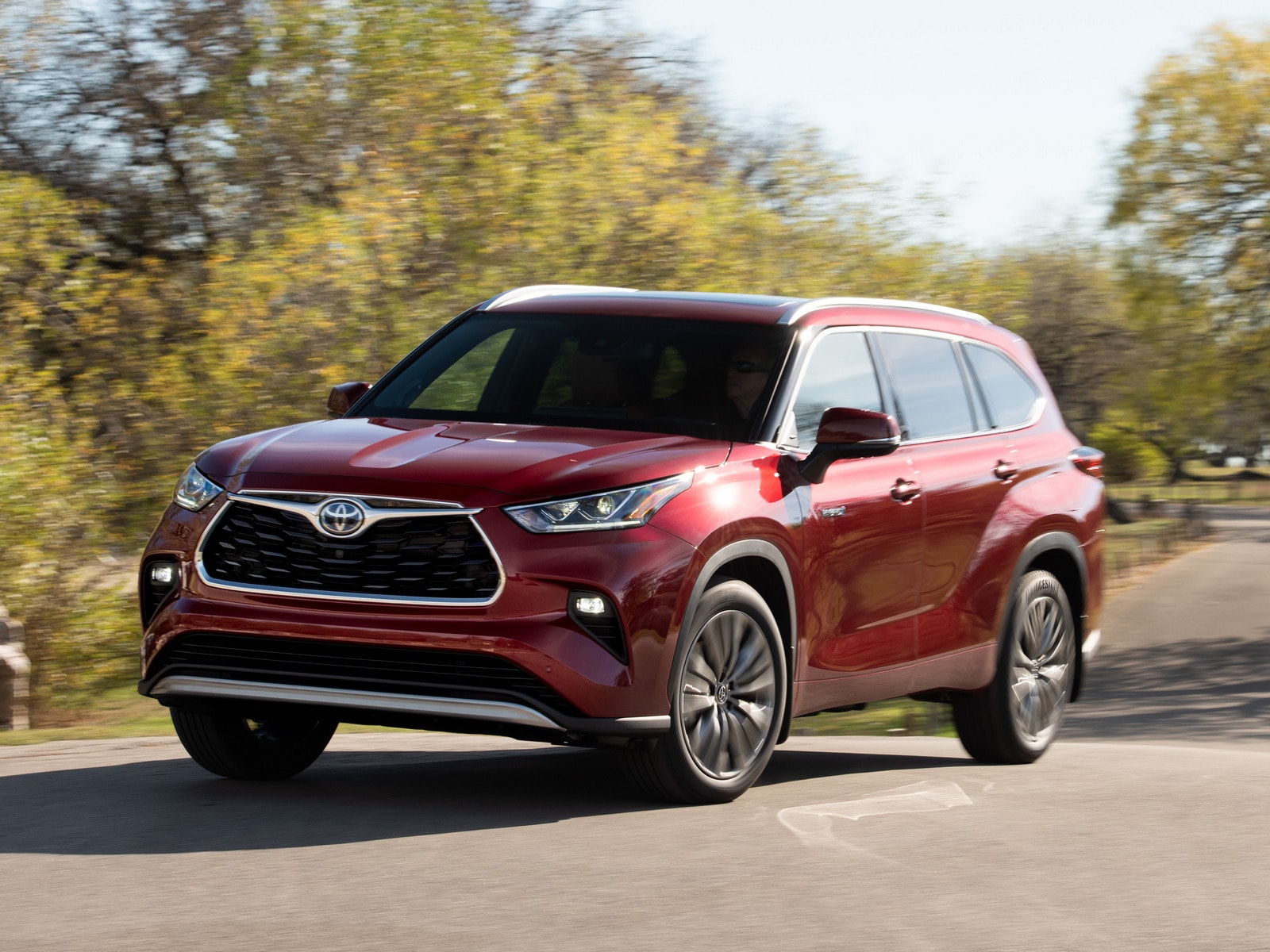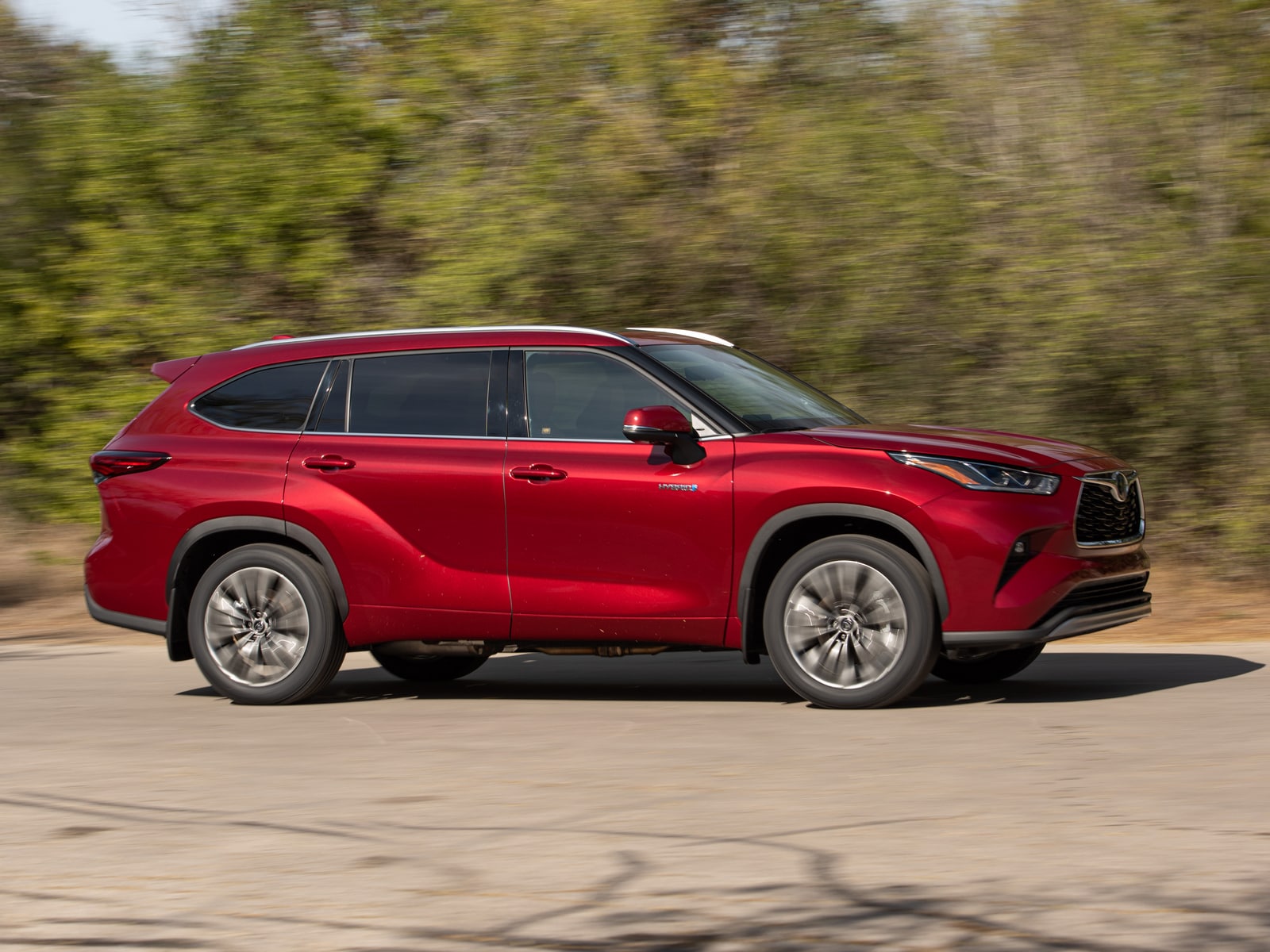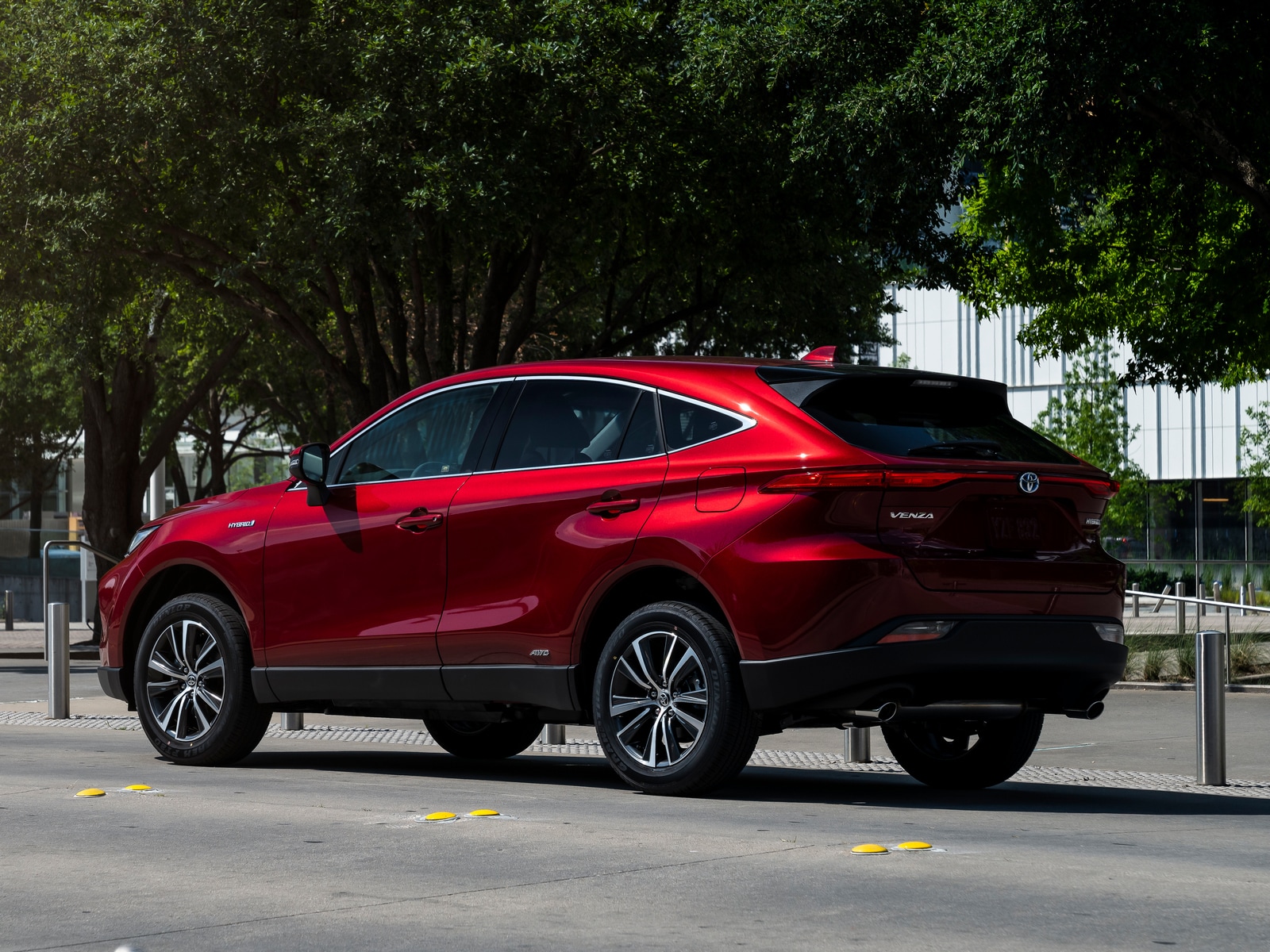Toyota sells hybrid all-wheel drive versions of both its RAV4 and Highlander SUVs. Both offer good value for the money, with roomy cabins and long feature lists, including all-wheel drive. But the hybrids have radically different all-wheel drive systems than non-hybrid models. How do these electric systems perform compared to their conventional counterparts? We tested them back-to-back.
- The RAV4 Hybrid, Highlander Hybrid, and upcoming 2021 Venza have a unique all-wheel-drive configuration that uses an electric motor to turn the rear wheels.
- Non-hybrid models come with a conventional AWD system, in which front and rear axles are connected with a driveshaft.
- Higher trim levels of the non-hybrid RAV4 have a more sophisticated AWD system that can also do side-to-side torque vectoring for improved performance.
Giving up the driveshaft in hybrid all-wheel drive
A 2.5-liter 4-cylinder engine sits under the RAV4 Hybrid’s hood. It’s mated to a transaxle that contains two electric motors. A small, nickel-metal-hydride battery resides under the rear seat. This pack powers the electric motors as well as storing electricity that’s regenerated under braking. A third electric motor is mounted under the rear cargo compartment. There is no driveshaft connecting the front and rear wheels. All told, the RAV4 Hybrid makes 219 horsepower. The same system in Highlander makes 243 hp.
Below 15 miles per hour, the rear motor in the RAV4 Hybrid is always engaged to increase low-speed traction, turning a standard mechanical differential connected to the rear axle. Above that range, the vehicle’s computer calculates when it should apply power through an electromagnetic clutch. As a result, wheel slippage is not necessary for the hybrid all-wheel drive system to engage. The computer also decides when the electric motor should spin in reverse for regeneration during deceleration.
Conventional AWD in other models
Non-hybrid RAV4 models also employ 2.5-liter 4-cylinder engines that make 203 horsepower without the electric motors. Rather, an 8-speed transaxle sends power to the front wheels, and in AWD versions use a driveshaft connected to the rear axle. The simplest version of this system employs a single electromagnetic clutch in the transaxle to control whether power is routed to the rear or not. In this on-demand system, front wheels do most of the driving.
The more sophisticated all-wheel-drive system, which is shared with higher trim levels of the Highlander, has two clutches in its rear differential. This allows power to be routed to one side or the other or both at the same time. Two additional clutches, in the transaxle and the rear differential, allow the rear axle to disconnect from the engine. This boosts fuel efficiency. But it’s that ability to send power to just one of the rear wheels, called torque vectoring, that gives this AWD system its greater capability.
Putting hybrid all-wheel drive to the test
So how does the hybrid all-wheel drive perform in the real world compared to the torque-vectoring system in the non-hybrid? At a recent event, Toyota allowed us to test the RAV4 Hybrid back-to-back against the RAV4 TRD Off-Road. We drove both vehicles on a snow-covered course, including a standing start test on a slippery grade. Spoiler alert: The RAV4 Hybrid acquitted itself quite well.
Neither vehicle had difficulty accelerating up the hill without excessively triggering its traction control system. The RAV4 Hybrid did require a much lighter touch on the throttle, as the instant torque of its rear electric motor could easily overpower its all-season tires. And once the RAV4 Hybrid’s traction control kicked in, it more aggressively cut the power. The non-hybrid model was much more lenient about spinning its wheels.
Enthusiast-grade AWD
Navigating the slippery course, the aggressive traction control of the hybrid kept us from sliding into the deep snow. Even when we tried to apply power to “drift” the rear end of RAV4 Hybrid into rotating around a corner, the computer was having none of it. Instead, the hybrid all-wheel drive calmly understeered straight forward to a stop every time. This is precisely what you want a vehicle to do in extremely slippery conditions. The opposite, oversteer, can result in the vehicle going into a dangerous spin.
The RAV4 TRD Off-Road did corner better without sliding, and not just from its better all-season tires with more grip. We could certainly feel the rear axle delivering more power to the outside rear tire while cornering. This helps to push the nose of the vehicle around the turn. The dynamic torque vectoring really works, making it easier to drive the RAV4 at higher speeds around the course.
The verdict
For the vast majority of buyers, the hybrid all-wheel drive capabilities of the RAV4 Hybrid should be more than enough. The advantages of torque-vectoring AWD apply more to enthusiasts and those who spend considerable time driving in the worst snowy and rainy conditions. The fuel economy advantage of the hybrid RAV4 is substantial: 40 miles per gallon combined against just 28 miles per gallon. For this reason, we can’t see passing on the hybrid in favor of higher capability AWD.
For the Highlander, there are other reasons to choose a model with dynamic torque vectoring – principally the greater power of its V-6 engine. The decision is also complicated by the front-drive Highlander Hybrid, which is a less expensive way to get into the most efficient hybrid at the sacrifice of all-wheel-drive. That said, the hybrid all-wheel-drive system in the Highlander is excellent. Delivering 35 mpg – a 12 mpg improvement over the non-hybrid. This alone makes the Highlander Hybrid just as compelling as the RAV4 Hybrid.
More: Is All-Wheel Drive Right for You?
